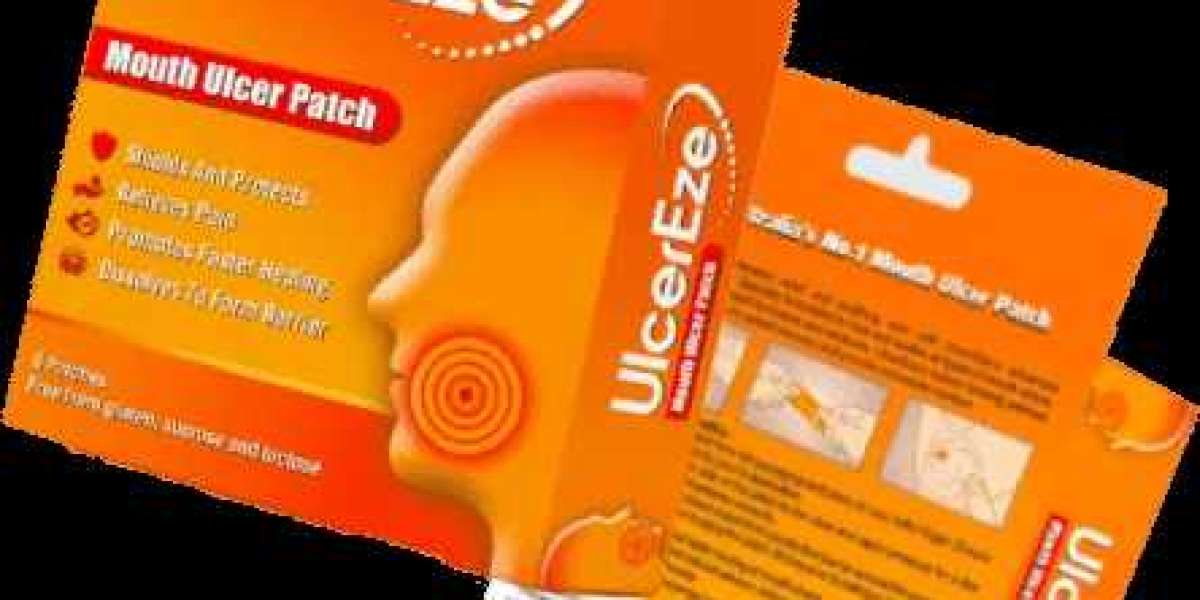Mouth ulcers, also known as canker sores or aphthous ulcers, are painful lesions that form on the mucous membranes inside the mouth. They can make eating, drinking, and even talking uncomfortable, often prompting people to seek effective relief. One innovative solution that has gained attention in recent years is the mouth ulcer patch—a small, adhesive film designed to cover the ulcer, protect it, and promote healing. This article explores the concept of mouth ulcer patches, how they work, their benefits, and their place in modern oral care.
What Are Mouth Ulcer Patches?
Mouth ulcer patches are thin, dissolvable or semi-permanent films that adhere directly to the ulcerated area inside the mouth. Typically made from biocompatible materials like hydrocolloids, polymers, or hyaluronic acid, these patches create a protective barrier over the sore. Some patches are medicated, releasing active ingredients such as anti-inflammatory agents (e.g., corticosteroids like triamcinolone acetonide), analgesics for pain relief, or antimicrobial compounds to prevent infection. Others are non-medicated, focusing solely on shielding the ulcer from irritation.
Unlike traditional treatments like mouthwashes or topical gels, which can wash away quickly in the moist environment of the mouth, patches are designed to stay in place for extended periods—ranging from 30 minutes to several hours—before dissolving or being removed. This prolonged contact enhances their effectiveness.
How Do Mouth Ulcer Patches Work?
The primary mechanism of a mouth ulcer patch is to act as a physical barrier. By covering the ulcer, it shields the sensitive tissue from external irritants such as spicy or acidic foods, rough textures, and even the tongue’s movement. This protection reduces pain and prevents further aggravation, allowing the body’s natural healing process to proceed more efficiently.
For medicated patches, the benefits go beyond mere protection. These patches gradually release their active ingredients directly onto the ulcer site, providing targeted relief. For example:
1. Anti-inflammatory agents reduce swelling and redness.
2. Pain relievers numb the area to alleviate discomfort.
3. Antimicrobials combat bacterial or fungal growth, which can complicate healing in some cases.
The adhesive nature of the patch ensures that the medication remains concentrated at the site of the ulcer, unlike creams or rinses that disperse throughout the mouth. Once the patch dissolves or is removed, it leaves no residue, making it a convenient and mess-free option.
Benefits of Mouth Ulcer Patches
1. Targeted Relief: Patches deliver treatment precisely where it’s needed, minimizing waste and maximizing efficacy.
2. Pain Reduction: By shielding the ulcer and, in some cases, numbing it, patches make daily activities like eating and speaking more bearable.
3. Faster Healing: Studies and user reports suggest that patches can accelerate recovery by protecting the ulcer and, when medicated, reducing inflammation or infection.
4. Convenience: Easy to apply and discreet, patches don’t require frequent reapplication like gels or rinses, improving user compliance.
5. Versatility: They can be used for various types of ulcers, including minor canker sores and, in some cases, more severe lesions associated with conditions like oral lichen planus.
Examples and Research
Several studies have highlighted the promise of mouth ulcer patches. For instance, research published in the Journal of Pharmaceutical Sciences evaluated a mucoadhesive patch containing natural ingredients like menthol and citrus oil. The study found that these patches healed canker sores in as little as 1.5 days, compared to 9-10 days for untreated sores. Another development involves a poly(ionic liquid)-based patch loaded with diclofenac sodium, which demonstrated antibacterial and anti-inflammatory properties, significantly speeding up healing in cases of infected ulcers.
Commercially, products like DenTek Canker Cover Patches and dissolvable films from brands like Vision Pharmacy are available over the counter. These patches are praised for turning into a gel-like bandage after application, providing hours of relief before dissolving.
Limitations and Considerations
While mouth ulcer patches are highly effective for many, they aren’t a one-size-fits-all solution. Some users may find them difficult to apply to hard-to-reach areas, like the back of the mouth. Others might experience mild irritation from certain ingredients. Additionally, patches are typically designed for minor ulcers; persistent or unusually large sores—lasting beyond two weeks—may signal an underlying condition like oral cancer or an autoimmune disorder, requiring medical attention rather than self-treatment.
How to Use a Mouth Ulcer Patch
Using a patch is straightforward:
1. Clean and Dry: Rinse your mouth and gently dry the ulcer area with a clean tissue to improve adhesion.
2. Apply the Patch: Place the patch over the ulcer, pressing it gently for a few seconds to secure it.
3. Wait: Allow the patch to dissolve or remain in place as directed (times vary by product).
4. Avoid Irritants: Refrain from eating or drinking for at least 30 minutes, if possible, to let the patch work undisturbed.
Conclusion
Mouth ulcer patches represent a significant advancement in managing a common yet bothersome condition. By combining protection with targeted therapy, they offer a practical alternative to traditional treatments, delivering faster relief and healing. Whether you’re dealing with a single canker sore or recurrent ulcers, these patches can be a game-changer, restoring comfort and confidence. However, as with any health product, it’s wise to consult a healthcare professional if symptoms persist or worsen, ensuring that the underlying cause is addressed. As research and innovation continue, mouth ulcer patches are poised to become a staple in oral care, transforming how we tackle this age-old annoyance.


